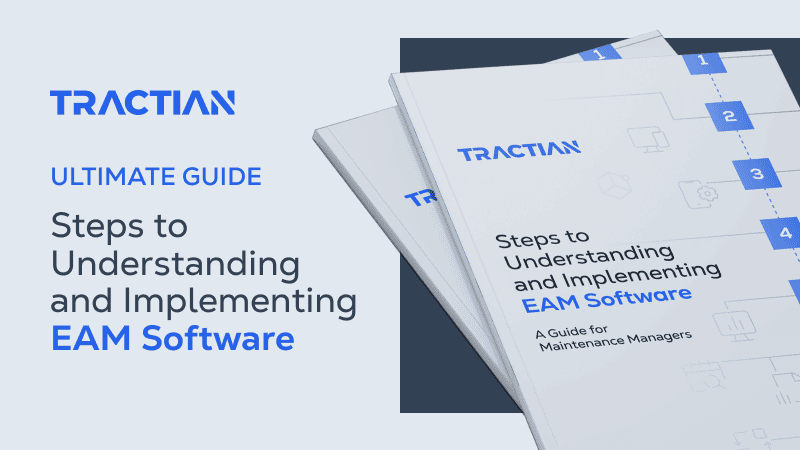Managing inventory efficiently can make or break a manufacturing operation's profitability. When inventory sits for too long, it ties up capital and increases storage costs. When it moves too quickly, you risk stockouts that halt production lines. The key to finding that sweet spot lies in understanding your stock turnover ratio.
This financial metric reveals how many times your company cycles through inventory during a specific period, giving you clear insight into whether you're carrying too much stock or not enough. We'll walk through the stock turnover ratio formula, show you how to calculate it step by step, and explain how to interpret the results to optimize your inventory management strategy.
Stock Turnover Ratio Explained
A thorough brief on stock turnover starts by recognizing it as one of the most practical metrics for evaluating inventory performance. The stock turnover ratio measures how many times a company sells and replaces its inventory during a specific period, typically a year. This financial metric, also known as inventory turnover ratio, reveals how efficiently a business converts inventory into sales and manages its working capital.
Put simply, the stock turnover metric centers on inventory velocity. It calculates the number of times inventory cycles through your operation, from purchase to sale, within a given timeframe.
This metric directly impacts cash flow, storage costs, and operational efficiency. Companies with higher turnover ratios typically tie up less capital in inventory, thereby reducing risks associated with obsolescence or spoilage. The business case becomes especially compelling when you consider that excess inventory represents dead capital sitting on your shelves.
Different industries target different benchmarks for what constitutes a good inventory turnover ratio. Manufacturing and retail companies typically set different goals for their stock turnover ratios, with targets varying according to industry practices and business models. The fast-moving consumer goods industry often experiences higher inventory turnover ratios compared to other sectors.
Understanding your stock turnover helps identify whether you're carrying too much inventory (tying up capital) or too little (risking stockouts). The ratio becomes particularly critical in manufacturing environments where raw materials, work-in-progress, and finished goods all compete for storage space and working capital.
Stock Turnover Calculation Made Simple
The basic stock turnover calculation uses a straightforward formula that any business can apply with standard financial data. Most companies calculate this annually, though quarterly or monthly calculations provide more granular insights for operational adjustments.
Here's the fundamental stock turnover ratio formula: Cost of Goods Sold / Average Inventory = Stock Turnover Ratio
To learning how to calculate the stock turnover ratio, start by understanding each component. Cost of Goods Sold (COGS) includes all direct costs associated with producing goods sold during the period. This encompasses raw materials, direct labor, and manufacturing overhead, but excludes indirect expenses such as marketing and administrative costs. You'll find COGS on your income statement as a line item.
Average Inventory smooths out seasonal fluctuations and temporary spikes in stock levels. Calculate it by adding the beginning inventory value and the ending inventory value, then dividing by two: (Beginning Inventory + Ending Inventory) ÷ 2.
How To Calculate Stock Turnover
Breaking down the calculation into manageable steps ensures accuracy and helps identify potential data issues before they affect your analysis.
For example, dividing your company's cost of COGS by the average inventory value will show how many times inventory cycles through during a given period.
Some analysts prefer using net sales instead of COGS, especially when comparing companies across industries. However, COGS provides more accurate results because it matches the actual cost of inventory sold rather than including profit margins in the calculation.
Stock Turnover Ratio Formula And Key Components
The stock turnover ratio formula is adaptable to various analytical needs and business contexts, with each variation serving specific purposes in inventory management and financial analysis.
Key Variations
Different calculation approaches serve distinct analytical purposes, from operational planning to financial benchmarking.
When you need to understand stock turnover rates in different contexts, monthly calculations help identify seasonal patterns and short-term inventory management issues. Manufacturing companies often use monthly turnover to adjust production schedules and purchasing decisions based on recent demand patterns.
Category-specific analysis breaks down turnover by product lines or inventory types. Turnover rates can vary significantly between raw materials and finished goods, highlighting opportunities for targeted improvements in inventory management.
Days Inventory Outstanding (DIO), or Days Sales of Inventory (DSI), flips the perspective by showing how many days' worth of inventory sit before being sold. Calculate DIO as 365 divided by the turnover ratio. A turnover ratio of 6 equals approximately 61 days of inventory on hand.
Stock turnover in days provides an intuitive understanding for operational teams. Instead of saying "we turn inventory 8 times per year," you can say "we carry 46 days of inventory," which resonates better with production planners and purchasing managers.
How To Interpret High Or Low Stock Turnover
Interpreting the stock turnover ratio requires understanding the context of your industry, business model, and operational constraints, rather than simply aiming for the highest possible number.
High turnover indicators suggest efficient inventory management and strong sales velocity. Companies achieving 10 or more turns annually typically demonstrate excellent demand forecasting, strong supplier relationships, and effective inventory control systems. However, extremely high turnover may indicate chronic stockouts, lost sales opportunities, or insufficient safety stock, resulting in production continuity issues.
Low turnover concerns often point to excess inventory, weak demand, or poor purchasing decisions. Ratios below industry averages may signal obsolete stock, overestimating demand, or inefficient production planning. Low turnover ties up working capital and increases storage costs, insurance expenses, and obsolescence risks.
Industry benchmarks vary significantly across sectors:
- Seasonality: Retail businesses often see turnover spikes during peak seasons, making annual averages more meaningful than quarterly snapshots
- Product type: Perishable goods naturally require higher turnover rates than durable equipment or raw materials with longer shelf lives
- Business model: Just-in-time manufacturers target higher turnover than companies maintaining strategic inventory buffers for supply chain disruptions
Manufacturing companies set their inventory turnover targets based on their production model and market dynamics. Companies serving volatile markets often maintain lower turnover ratios to ensure production continuity during supply disruptions.
Practical Example Of Stock Turnover Ratio
Consider ABC Manufacturing, a mid-sized company producing industrial components, which needs to evaluate its inventory efficiency for the fiscal year ending December 31st.
Numerical Breakdown in 5 Steps
Starting with ABC Manufacturing's financial data, we can walk through each calculation step to demonstrate how to find the stock turnover ratio in practice.
Step 1: Gather financial data
- The inventory at the start of the year (January 1) is recorded as the beginning inventory value.
- Ending inventory at the end of the year can be determined by reviewing your company's financial records for December 31.
- Cost of Goods Sold (annual): [insert your company's annual COGS here]
Step 2: Calculate average inventoryTo determine average inventory, add the beginning and ending inventory values together and divide by two.
Step 3: Apply the formulaBy dividing the cost of goods sold by the average inventory, you can determine the stock turnover ratio for the period.
Step 4: Calculate days inventory outstandingDays Inventory Outstanding is calculated by dividing 365 by the stock turnover ratio.
Step 5: Interpret resultsABC Manufacturing cycles through inventory 5.14 times annually, carrying approximately 71 days of inventory. For industrial manufacturing, this falls within typical ranges, indicating reasonable inventory management with minimal carrying costs and low stockout risks.
Comparing this to industry benchmarks, ABC's turnover aligns with that of manufacturing companies that maintain balanced inventory levels. The 71-day inventory cycle provides an adequate buffer for production planning while avoiding excessive capital tie-up.
CP Kelco achieved significant savings by implementing proper maintenance and inventory tracking systems. "I'm really impressed by the reliability metrics that Tractian is able to calculate in real time, and the level of detail when it comes to the failure modes and the insight generation. Tractian has really improved our asset availability." - Gautam Sane, CP Kelco Senior Reliability Engineer
Common Pitfalls And Limitations
Stock turnover analysis faces several inherent limitations that can mislead decision-makers if not properly understood and addressed.
Seasonal fluctuations create significant interpretation challenges, particularly for businesses with pronounced seasonal demand patterns. A company might show excellent turnover during peak season but poor performance during slow periods, making annual averages potentially misleading for operational planning.
Product mix issues arise when companies aggregate diverse inventory categories with vastly different turnover characteristics. Raw materials might turn over 15 times annually, while finished goods turn over only 4 times, creating an average that doesn't accurately represent either category's performance.
Accounting method impact affects calculations significantly. Companies using FIFO vs LIFO during inflationary periods show different COGS, making direct comparisons problematic without adjusting for accounting differences.
Industry comparability becomes problematic when benchmarking across different sectors or business models. A just-in-time manufacturer's turnover ratio shouldn't be compared directly to a company maintaining strategic inventory buffers for supply chain resilience.
To overcome these limitations, analyze turnover by product category, adjust for seasonal patterns using rolling averages, and benchmark against companies with similar business models rather than broad industry averages. Monthly or quarterly calculations often provide more actionable insights than annual figures alone, and a free Maintenance Plan Calendar helps structure these periodic reviews.
Strategies To Improve Your Stock Turnover
Implementing just-in-time inventory systems reduces carrying costs and improves turnover by synchronizing deliveries with production schedules. Start with high-volume, predictable items before expanding to more complex inventory categories.
Improving demand forecasting accuracy through better data analysis and market intelligence helps align inventory levels with actual demand patterns. Use historical sales data, seasonal trends, and market indicators to inform and refine purchasing decisions.

Optimizing supplier relationships and lead times enables lower safety stock levels without increasing the risk of stockouts. Negotiate shorter lead times, improve communication channels, and develop backup suppliers for critical items.
Using ABC analysis to prioritize inventory management focuses attention on items with the greatest financial impact, and you can also use our ABC Curve and Inventory Control resource to refine your categorization. Manage A-items (high value, low quantity) with tight controls while allowing more flexibility with C-items (low value, high quantity).
Leveraging technology for real-time inventory tracking provides visibility needed for precise inventory management. Modern systems automatically calculate turnover metrics, flag slow-moving items, and suggest reorder points based on actual consumption patterns.
How Tractian CMMS Can Optimize Your Inventory Performance
Stock turnover optimization goes beyond the basic formula and its calculations. It requires systems that integrate inventory management with operational workflows, providing real-time visibility and automated analysis to drive better decisions.
Most companies struggle with inventory management because they're using disconnected systems that can't provide the real-time insights needed for effective turnover optimization. Spreadsheets and manual calculations simply can't keep pace with modern manufacturing demands.
Tractian CMMS brings inventory management into the digital age with features designed specifically for manufacturing environments. Real-time tracking automatically calculates stock turnover ratios across multiple dimensions, while predictive analytics help forecast optimal inventory levels based on historical patterns and demand forecasts.
The platform's integration capabilities connect inventory data with production planning, purchasing, and financial systems, enabling seamless data flow. This integration ensures turnover improvements align with broader operational goals rather than optimizing inventory in isolation.
Ready to take control of your inventory performance?
Request a demo today and discover how Tractian CMMS helps manufacturing teams optimize stock turnover, reduce carrying costs, and improve operational efficiency.


